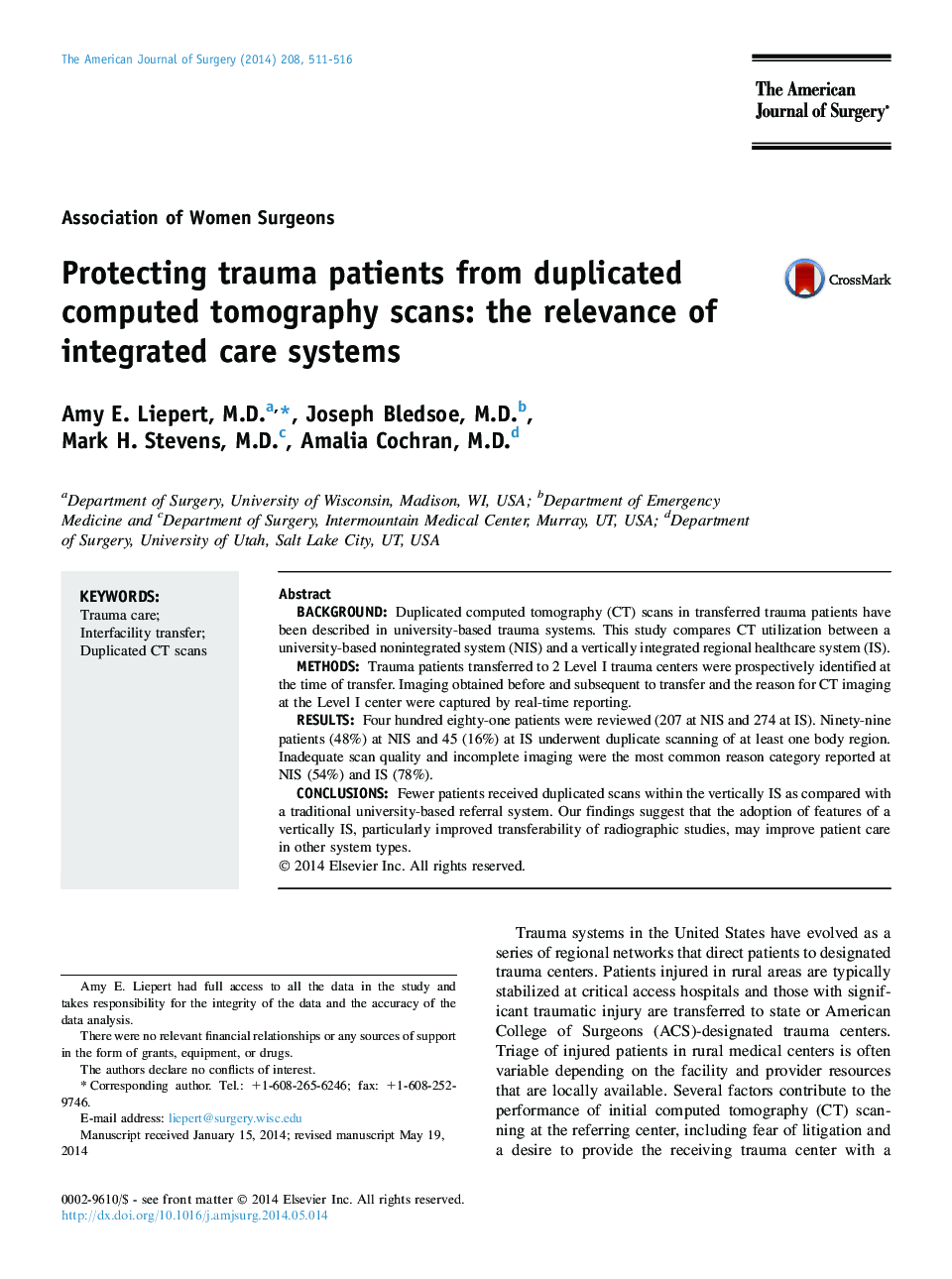| Article ID | Journal | Published Year | Pages | File Type |
|---|---|---|---|---|
| 4278951 | The American Journal of Surgery | 2014 | 6 Pages |
•Two tertiary trauma centers are examined, one within a integrated healthcare system and the other within a non-integrated healthcare system.•We observed the difference in duplication of CT scan acquisition in transferred trauma patients between the two centers.•The integrated system has fewer patients that received duplicated CT scans than the non-integrated system.•The reasons, as given by the receiving trauma surgeon, for these differences were collected in a prospective manner.
BackgroundDuplicated computed tomography (CT) scans in transferred trauma patients have been described in university-based trauma systems. This study compares CT utilization between a university-based nonintegrated system (NIS) and a vertically integrated regional healthcare system (IS).MethodsTrauma patients transferred to 2 Level I trauma centers were prospectively identified at the time of transfer. Imaging obtained before and subsequent to transfer and the reason for CT imaging at the Level I center were captured by real-time reporting.ResultsFour hundred eighty-one patients were reviewed (207 at NIS and 274 at IS). Ninety-nine patients (48%) at NIS and 45 (16%) at IS underwent duplicate scanning of at least one body region. Inadequate scan quality and incomplete imaging were the most common reason category reported at NIS (54%) and IS (78%).ConclusionsFewer patients received duplicated scans within the vertically IS as compared with a traditional university-based referral system. Our findings suggest that the adoption of features of a vertically IS, particularly improved transferability of radiographic studies, may improve patient care in other system types.
